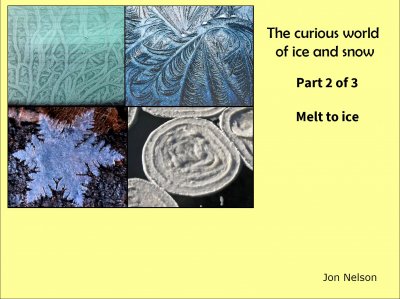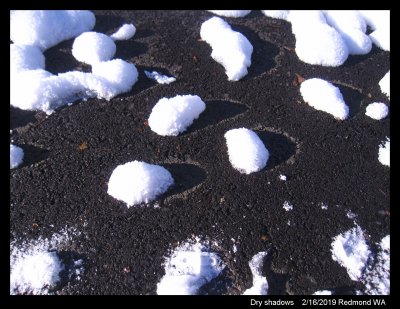Category: "Pavement ice-water patterns"
The Curious World of Ice and Snow: Part 2 of 3
February 8th, 2020As I mention in Part 1, these are slides I gave for a Science Cafe discussion session in 2012. This section focuses on ice that forms directly from the melt, that is, the liquid phase. Contrast these cases with those in part 1 in which the ice grew from the vapor. Some of these cases might seem a little familiar, but many ought to seem downright bizarre.
As always, click on an image to enlarge it.
The contents here are emphasized in green font below. The underlying difference between ice growth from vapor and from melt is that the melt is much denser. The higher density means that vastly more water molecules can impinge on the ice surface in a given time and area. This higher impingement usually means faster growth and larger crystals, but the way that the melt reaches the crystal influences the form, and the result is not always so obvious. In fact, I would even say that it is never obvious.
OK then, let's get right back into it.
Strange dry shadows
February 14th, 2019Sunshine on pavement seems straightforward enough. It warms the surface, driving evaporation (or sublimation), and dries things out. Conversely, we know that moisture tends to collect on surfaces that are either colder or closer to a water source. And the moisture tends to persist more if the region is more enclosed. Agreed? Now, does anything look strange about these shadows?
The shadows of these snow clumps appear to be dry pavement, the regions in the sun moist. As the sun moved across the sky, the shadows moved, and once dry pavement that was formerly in the shadow became moist as it came into the sun. The image below was taken three hours later.



